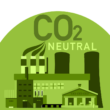In the face of climate change, every action counts. Carbon offset programs have emerged as a practical way for individuals and organizations to counterbalance their greenhouse gas emissions. However, not all programs deliver what they promise. To truly make an impact, it’s essential to choose a reliable carbon offset program that contributes to meaningful environmental change.
Table of Contents
- Understanding Carbon Offsets
- The Importance of Choosing Reliable Carbon Offset Programs
- Criteria for Evaluating Carbon Offset Programs
- Types of Carbon Offset Projects
- Avoiding Common Pitfalls in Carbon Offsets
- Tools and Resources for Finding Reliable Programs
- Questions to Ask Before Choosing a Carbon Offset Program
- Benefits of Supporting Reliable Carbon Offset Programs
- Conclusion
- FAQs
Understanding Carbon Offsets
What Are Carbon Offsets?
Carbon offsets represent actions taken to compensate for the carbon dioxide emissions one generates. They typically involve supporting projects that reduce, remove, or capture greenhouse gases elsewhere to counterbalance one’s own footprint. Think of it as balancing scales: emissions on one side and mitigation efforts on the other.
From renewable energy installations to forest conservation projects, offsets are designed to neutralize the impact of activities like air travel or large-scale manufacturing.
How Do Carbon Offsets Work?
The concept revolves around funding projects that actively work to reduce greenhouse gas levels. For example, a company might invest in reforestation programs to offset emissions from its logistics operations. By calculating their carbon output, individuals or organizations can purchase equivalent “credits” that fund offset projects.
Popular examples include:
- Installing wind turbines to replace coal power
- Capturing methane emissions from landfills
- Restoring ecosystems like mangroves
The Importance of Choosing Reliable Carbon Offset Programs
Impact of Low-Quality Offsets
Not all offsets are created equal. Low-quality programs may inflate their results or fail to deliver lasting benefits. Projects that don’t meet rigorous standards might undermine global climate efforts and tarnish a company’s reputation.
Benefits of Reliable Carbon Offset Programs
High-quality offset programs offer measurable, verifiable, and lasting climate benefits. They ensure environmental integrity while fostering trust among consumers, stakeholders, and communities.
Criteria for Evaluating Carbon Offset Programs
Transparency and Accountability
Reliable programs openly share information about their projects, methodologies, and results. Publicly accessible data and regular third-party audits are essential indicators of a trustworthy provider.
Certification Standards
Credible certifications like the Verified Carbon Standard (VCS) or Gold Standard signify that a program meets strict environmental and ethical criteria. These stamps of approval reassure buyers about a project’s quality and legitimacy.
Project Additionality
The principle of additionality ensures that the offset project wouldn’t have occurred without the purchase of carbon credits. For instance, a reforestation project funded by offsets should exist solely because of the financial support it receives from offset buyers.
Permanence and Leakage
A legitimate carbon offset must deliver lasting benefits. For example, a forest preservation project must ensure the forest remains protected for decades, avoiding “leakage” where deforestation shifts to another area.
Types of Carbon Offset Projects
Renewable Energy Projects
These projects focus on replacing fossil fuels with sustainable energy sources like wind, solar, or hydroelectric power. Renewable energy offsets are among the most scalable and impactful options for reducing emissions globally.
Reforestation and Afforestation
Planting trees is a natural way to absorb CO₂ from the atmosphere. Reforestation replaces lost trees, while afforestation introduces new forests in previously barren areas.
Methane Capture and Waste Management
Methane, a potent greenhouse gas, is often released from landfills or agricultural operations. Projects that capture and repurpose methane for energy significantly reduce its climate impact.
Energy Efficiency Initiatives
Improving energy efficiency—whether through advanced building technologies or upgraded industrial systems—lowers emissions by reducing the energy required for everyday activities.
Avoiding Common Pitfalls in Carbon Offsets
Greenwashing and Misleading Claims
Beware of programs that make vague or exaggerated promises without evidence. Greenwashing erodes trust and can divert funds away from genuine solutions.
Overreliance on Offsets Without Reducing Emissions
Offsets should complement, not replace, internal efforts to cut emissions. Prioritizing emission reductions within your operations makes offsetting more meaningful.
Tools and Resources for Finding Reliable Programs
Platforms Offering Trusted Offset Projects
Websites like Gold Standard Marketplace and Carbon Footprint Ltd. provide access to vetted projects, ensuring your investment goes to impactful initiatives.
How to Verify a Program’s Authenticity
Reviewing certifications, project reports, and testimonials can help assess whether a program meets rigorous environmental criteria.
Questions to Ask Before Choosing a Carbon Offset Program
Assessing the Credibility of Providers
Does the program have third-party certifications? Can it demonstrate tangible results? Asking these questions ensures you partner with a reputable provider.
Evaluating the Scope and Impact of Projects
Look for programs that align with your values and have proven long-term benefits. For example, is the project addressing local community needs as well as global climate goals?
Benefits of Supporting Reliable Carbon Offset Programs
Contribution to Sustainable Development
High-quality offsets often support broader goals like poverty alleviation, biodiversity preservation, and renewable energy adoption, making them doubly impactful.
Building Consumer Trust and Brand Value
Businesses that commit to credible offsets not only reduce their footprint but also enhance their brand reputation, signaling accountability and environmental responsibility.
Conclusion
Choosing the right carbon offset program is a critical step in addressing climate change. By focusing on transparency, additionality, and credible certifications, you can ensure your efforts make a lasting difference. Whether you’re an individual or a corporation, reliable offsets help pave the way for a sustainable future.
FAQs
What is the role of certification in carbon offset programs?
Certifications like VCS and Gold Standard provide assurance of quality and accountability.
How do I know if a carbon offset program is legitimate?
Check for transparency, third-party verification, and detailed project descriptions.
Are all carbon offset projects equally effective?
No, their effectiveness depends on the type of project and its implementation.
Can individuals participate in carbon offsetting?
Yes, many platforms offer individual carbon footprint calculators and access to offset programs.
How do carbon offsets fit into broader climate strategies?
Offsets are a complementary tool alongside direct emission reductions and sustainability initiatives.









